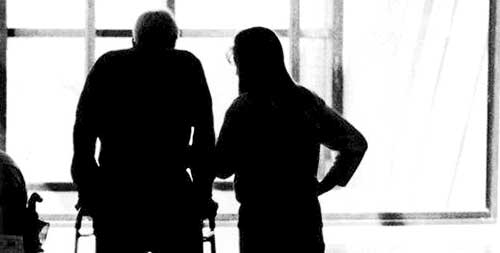
World Bank to be more disabled friendlyThe World Bank announced this week that it would increase attention towards helping the disabled. This increased focus on the disabled is expected to improve effectiveness of poverty reduction strategies because of the linkages between poverty and disability.
This week, in keeping with its disability friendly policies, the World Bank, through its Small Grants programme awarded nearly Rs 3.5 million worth of grants to 7 different organisations involved in helping the disabled. “There is growing evidence that disability is an important development issue,” said the World Bank’s country director for Sri Lanka, Naoko Ishii, speaking at the handover of the grants. “There is a two way link between disability and poverty. The poor are at higher risk to becoming disabled as they lack access to good nutrition, health and sanitation and also good work conditions. Once they are disabled they face a lot of barriers accessing education and other public services. The disabled also face a lot of social stigma which is a really serious issue. So disability is very, very important in development policy,” said Ishii. Sri Lanka’s national policy on disability points out that the disabled are among the poorest of the poor in the country and also lack income opportunities to improve their condition. Even with some form of employment most disabled people do not earn enough to become independent. A study by the Ministry of Social Welfare in 2003, on the situation of adults suffering from various types of disability, shows that over 80% of disabled individuals, who have some form of employment, live on less than US$ 2 per day. The study found that out of those employed, employment in the private sector was a low 13%. This is largely attributed to the negative attitudes towards the disabled. Due to low income and low ability to earn incomes, disabled people are often left with no choice but to become permanent dependents. Families who have disabled family members therefore, have an extra burden. However, despite a higher need for welfare benefits less than half (41%), of the disabled actually received a welfare benefit. Of these, 62% were Samurdhi beneficiaries and 43% received welfare benefits of Rs 100 - 300 per month from the Department of Social Services. It is also seen that even among the disabled, women tend to be treated worse. Disabled women find it harder to find jobs and also have lower access to education, than men. Out of those suffering from various disabilities, people with psychiatric disabilities tend to face the most social stigma. These people are often labelled as mad and are shunned by family and society. Because families tend to hide or over protect them, disabled people are often cut off from social activities and as a result find it harder to integrate into society. The study notes that “As little as 6% have the opportunity of deriving enjoyment from musical shows, concerts, cinema and other forms of entertainment. 33% never go out with the rest of the family and the same proportion have never been to a wedding, nor have they taken part in community activities and festivals. Only 21% take part in religious activities. Only 14% had taken part in any kind of sports, and this had been almost wholly at school and village level.” Superstitious beliefs still associate disabled people with bad luck and misfortune. For instance many believe that seeing a person with a disability when starting out on a journey, is bad luck. Disabled people are also not taken to weddings and other functions for the same reason. Difficulty in communicating with the rest of society is another major barrier faced by disabled people. Lack of sign language knowledge among the rest of society for instance, cut off the disabled from mainstream vocational training and employment. Vocational training materials and instructions are also not available in Braille. According to the Association of Disabled Ex-Service Personnel, Sri Lanka has over 30,000 disabled soldiers alone, without counting the civilian victims of war. The numbers are steadily increasing as the war drags on. Many soldiers who are already disabled face looming financial problems. “There are over 30,000 disabled soldiers who are still living. Our association supports around 11,800 soldiers including widows and parents. Many young disabled soldiers are facing problems as they get older because although they get a salary they will not get a pension. To get the pension, they have to serve 12 years in the forces. But a lot of people have become disabled within a few weeks or months. So these people will not have an income when they are older because they will not qualify for pension. But when they are older is when they will need money,” said Asoka Dayaratna, President of the Association of Disabled Ex-Service Personnel. Landmines and other explosive devices used in the war have left survivors with a wide variety of disabilities affecting vision, hearing and speech and mobility, emotional and psychological injury and trauma. |
|
||
| || Front
Page | News
| Editorial
| Columns
| Sports
| Plus
| Financial
Times | International
| Mirror
| TV
Times | Funday Times|| |
| |
Copyright
2007 Wijeya
Newspapers Ltd.Colombo. Sri Lanka. |
